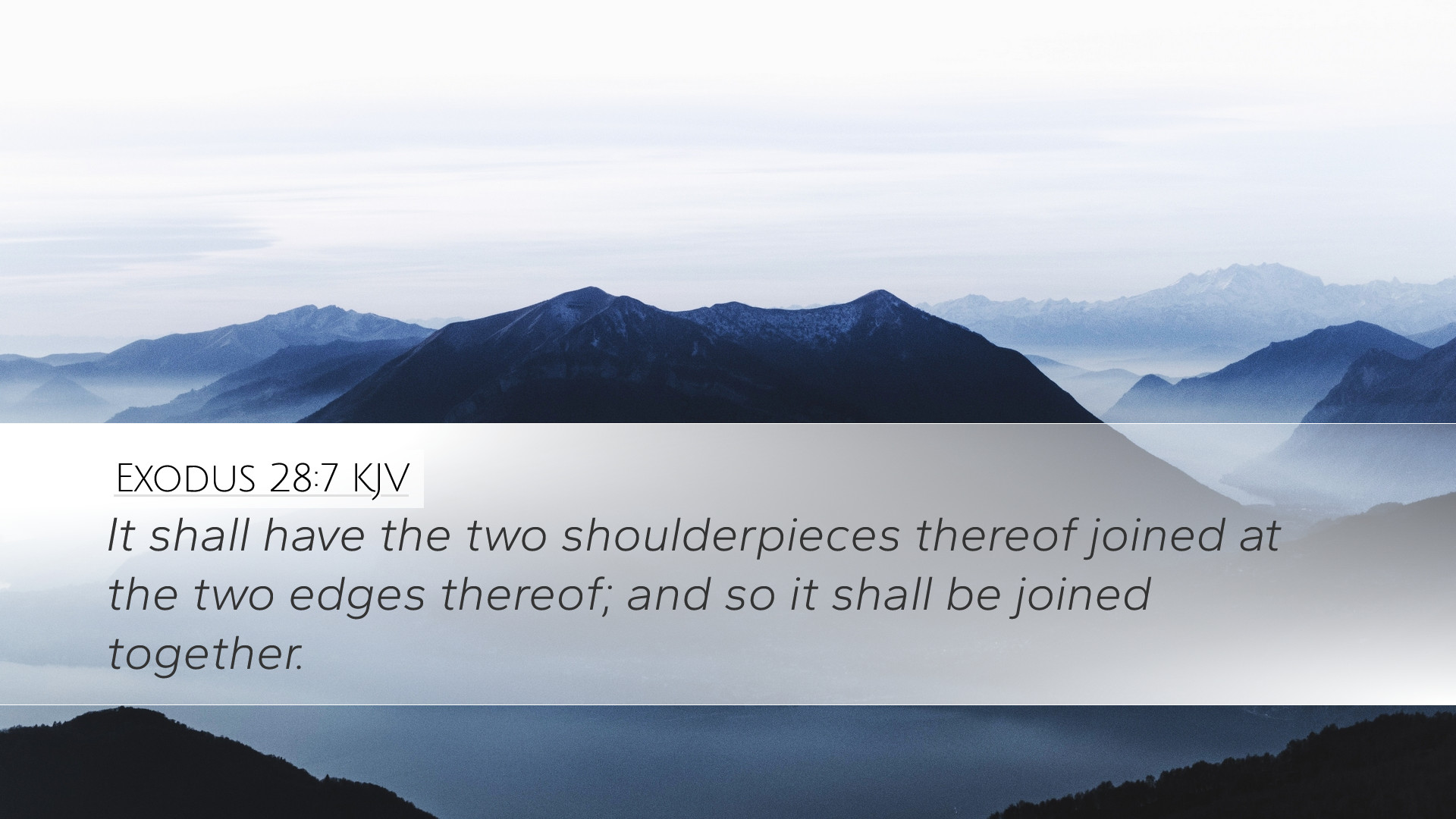Exodus 28:7 Commentary
Verse Context: Exodus 28:7 states: "It shall have the two shoulder pieces thereof joined at the two edges thereof; and so it shall be joined together." This verse focuses on the making of the ephod, a significant garment worn by the high priest in ancient Israel. The ephod symbolizes the mediation between God and the people of Israel.
Significance of the Ephod
The ephod was not just a ceremonial garment but a vital element representing the priest's role as a mediator. It encompassed the mystical and liturgical aspects of Israelite worship, and its construction involved specific instructions from God.
Matthew Henry's Commentary
Matthew Henry emphasizes the precision and divine mandate in the making of the ephod. He notes:
- Divine Authority: The ephod was designed by God, affirming His authority over worship practices. Henry reflects on how this garment reflects the orderliness and holiness required in the presence of God.
- Mediation: The function of the ephod signifies the high priest's role as a mediator. Just as the ephod connects the shoulder pieces, the high priest connects the Israelites to God through sacrifice and intercession.
Albert Barnes' Commentary
Albert Barnes elaborates on the structural and symbolic components of the ephod:
- Symbol of Strength: The shoulder pieces represent strength and support, underpinning the priest's responsibilities as he bears the weight of the people's burdens before God.
- Unity and Connection: The joining of the shoulder pieces illustrates the unity of God's people and their collective approach to divine worship. It shows that the high priest does not serve in isolation but rather as part of a larger community.
- Cultural Context: Barnes provides insights into the cultural practices of the period, noting that garments worn by priests were common in ancient religions, which emphasizes the importance of distinction in attire and role.
Adam Clarke's Commentary
Adam Clarke offers additional insights focusing on the technical aspects of the ephod:
- Construction Details: Clarke delves into the construction of the ephod, highlighting that it involved meticulous craftsmanship, which reflects the broader principle that God deserves our best in service.
- Spiritual Symbolism: Clarke interprets the ephod as an emblem of calling and vocation, asserting that those in ministry should be reminded of their sacred duties and the seriousness of their calling as representatives of God.
Theological Implications
This passage resonates with several theological concepts that merit deeper exploration:
- Role of the Priesthood: The ephod's design reveals God's intention for the priesthood as integral to worship and intercession. The high priest not only performed rituals but also bore the names of the Israelites on his shoulders, symbolizing their needs and struggles before God.
- Christological Insights: Understanding the ephod's symbolism leads to reflections on Jesus Christ as the ultimate High Priest. He fulfills the requirements of the ephod with His sacrificial role, ensuring that all believers have access to God through Him.
- Community Representation: The shoulder pieces signify that leadership is a communal responsibility, where the burdens of the congregation are borne by those in authority, and vice versa.
Practical Applications
From both a pastoral and scholarly perspective, several practical applications arise from this passage:
- Importance of Precision in Worship: As the ephod was constructed with precision, so should our approach to worship be intentional and aligned with God's design for our ministries.
- Call to Leadership: Those in roles of spiritual leadership are reminded of their responsibilities. They are to bear the weight of their congregation's spiritual state, looking to God for strength and guidance.
- Encouragement of Community in Ministry: Leaders should not work in isolation; collaboration and mutual support within the body of Christ enhance the strength of the church.


